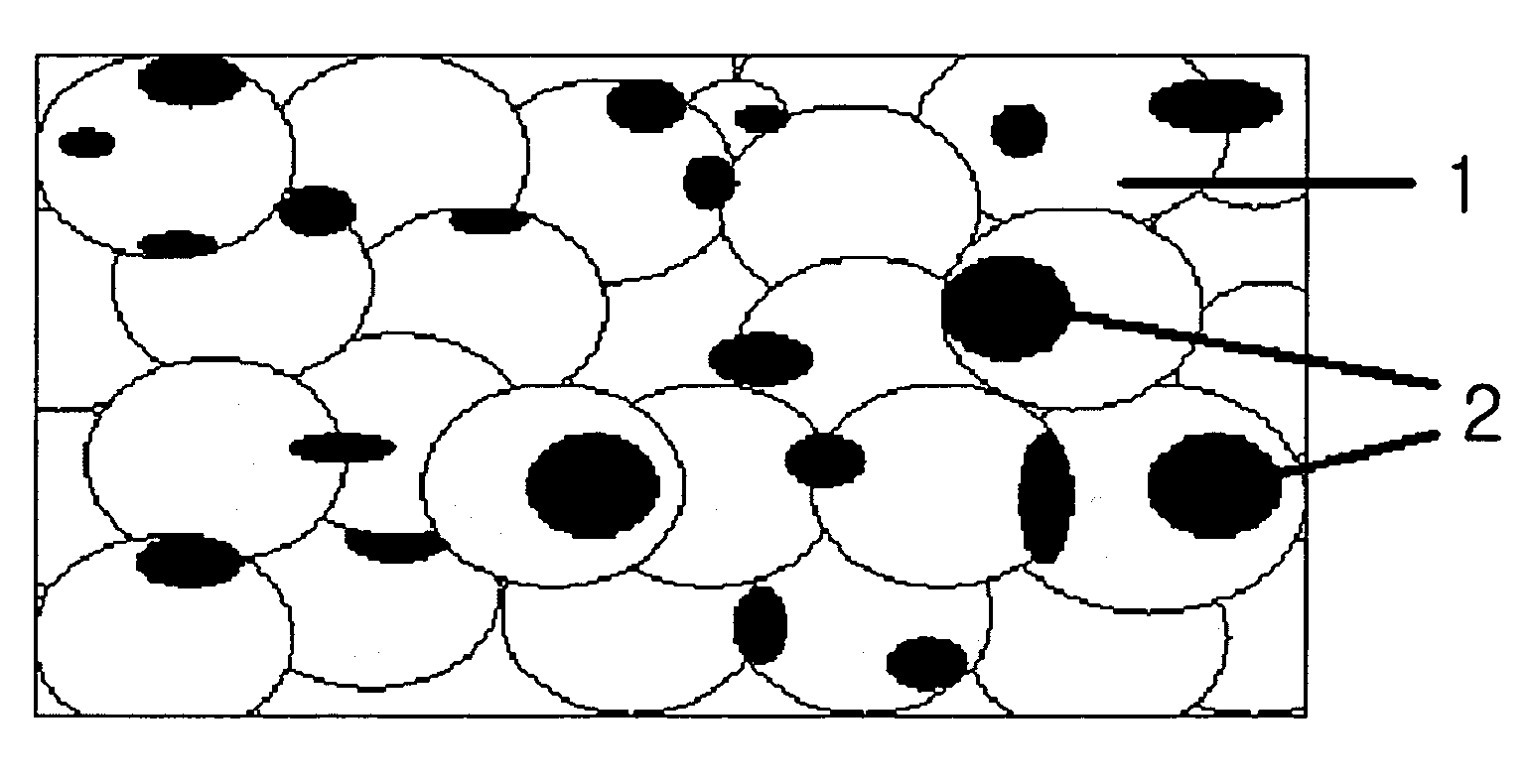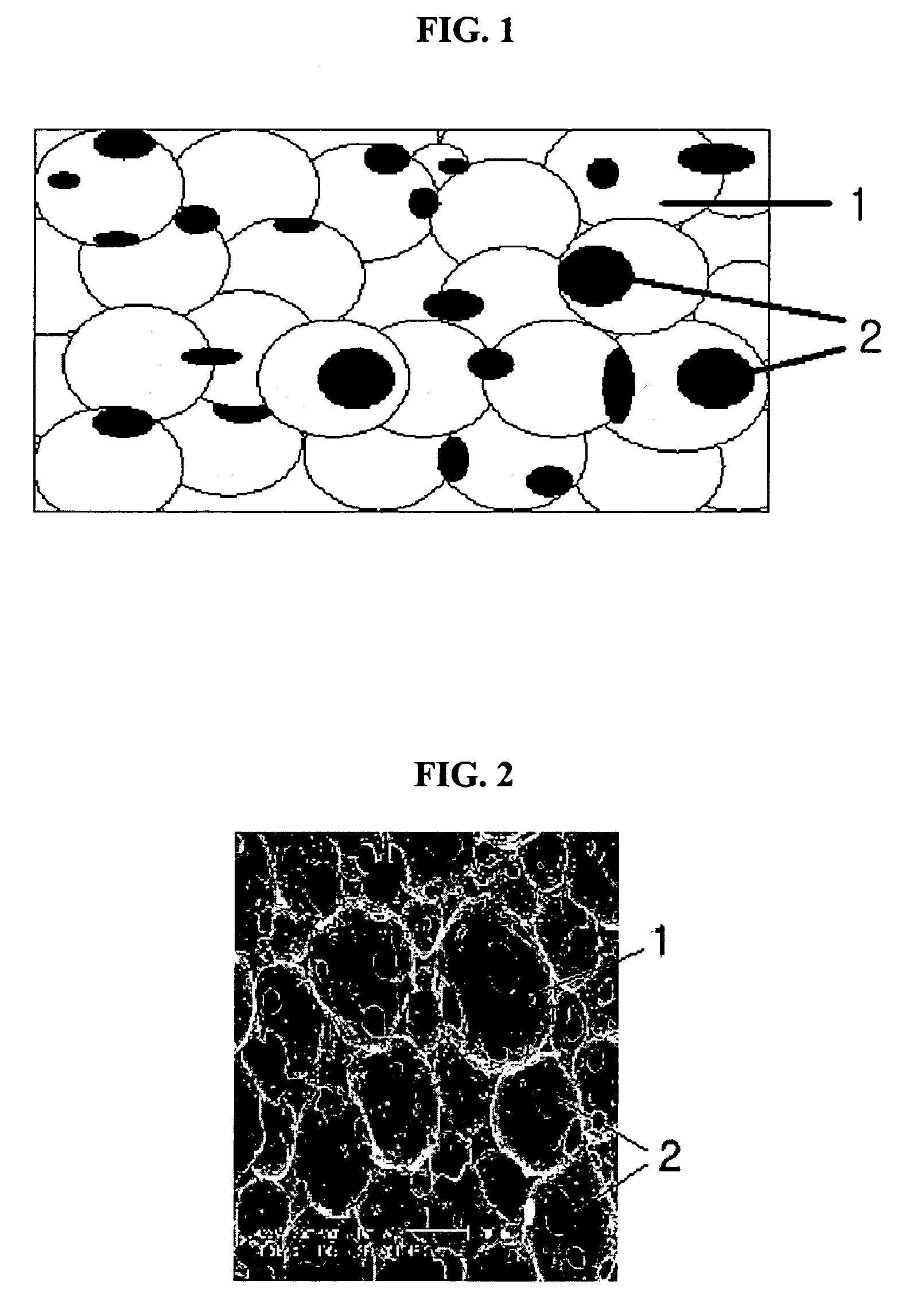Polyurethane Foam Dressing for Wound Filler and Method for Manufacturing Thereof
- Summary
- Abstract
- Description
- Claims
- Application Information
AI Technical Summary
Benefits of technology
Problems solved by technology
Method used
Image
Examples
preparation example 1
[0032]After 242.8 g of toluene diisocyanate (TDI) was charged in a 3 l round-bottom flask with a stirrer and heated to 60° C., 1257.5 g of TR-705 (manufactured by Korea Polyol Co.) consisting of an ethylene oxide / propylene oxide random copolymer having three hydroxyl groups and an ethylene oxide content of 75% was added into the round-bottom flask little by little to react toluene diisocyanate with TR-705 for seven hours until a theoretical NCO % was accomplished to produce a polyurethane prepolymer with isocyanate end groups. At an intermediate step of the reaction, a mixture of toluene diisocyanate and TR-705 was sampled to measure NCO % using an n-butyl amine standard solution according to a titrimetry method.
example 1
[0033]After 26.7 wt % distilled water as a foaming agent, 6.4 wt % guar gum as a moisturizing agent, 14.1 wt % glycerine as a crosslinking agent, and 1.4 wt % L-64 (manufactured by BASF CO.) as a surfactant were added to 51.4 wt % polyurethane prepolymer produced in preparation example 1, the resulting mixture was agitated at 4000 rpm for 5 sec, injected into a mold with a predetermined shape and subjected to a foaming process to produce a hydrophilic polyurethane foam dressing. At this time, the mold was 25° C., and the polyurethane foam dressing was separated from the mold after 10 min since the resulting mixture was injected into the mold. A skin layer of the polyurethane foam dressing was removed and cut into pieces with a thickness of 5 mm using a horizontal cutter. The resulting polyurethane foam dressing was 0.24 g / cm3 in terms of density.
[0034]The physical properties of the hydrophilic polyurethane foam dressing were measured according to the following methods, and the resul...
example 2
[0056]The procedure of example 1 was repeated except that 0.4 wt % F-127 (manufactured by BASF Co.) and 1.0 wt % L-64 were added as a surfactant to a polyurethane prepolymer to produce a hydrophilic polyurethane foam dressing. The physical properties of the hydrophilic polyurethane foam dressing were measured in the same manner as example 1, and the results are described in Table 1.
PUM
| Property | Measurement | Unit |
|---|---|---|
| Length | aaaaa | aaaaa |
| Length | aaaaa | aaaaa |
| Length | aaaaa | aaaaa |
Abstract
Description
Claims
Application Information
 Login to View More
Login to View More - R&D
- Intellectual Property
- Life Sciences
- Materials
- Tech Scout
- Unparalleled Data Quality
- Higher Quality Content
- 60% Fewer Hallucinations
Browse by: Latest US Patents, China's latest patents, Technical Efficacy Thesaurus, Application Domain, Technology Topic, Popular Technical Reports.
© 2025 PatSnap. All rights reserved.Legal|Privacy policy|Modern Slavery Act Transparency Statement|Sitemap|About US| Contact US: help@patsnap.com


